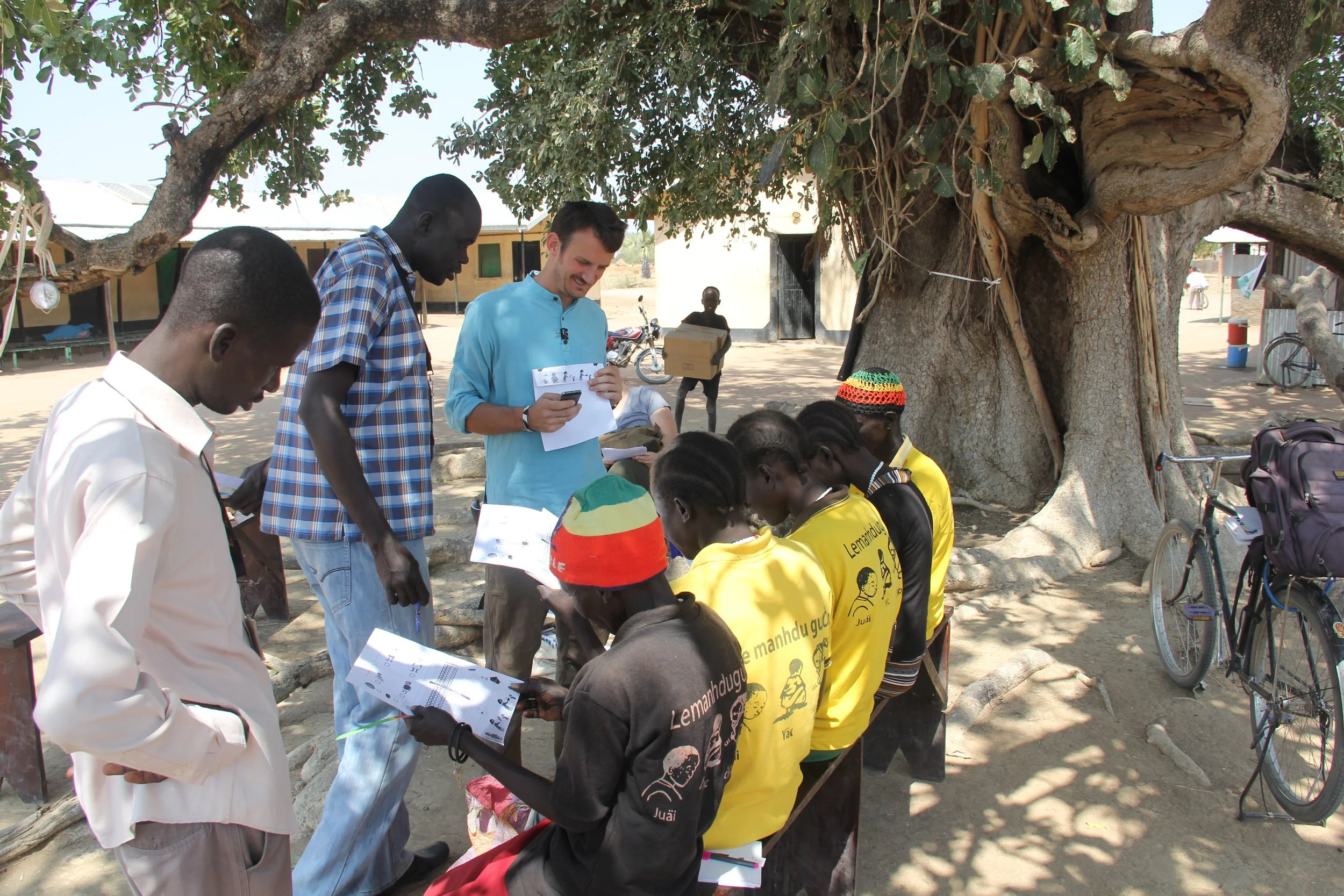IRC: S.A.M Diagnostic Toolkit*
Overview
The International Rescue Committee’s nutrition program sought assistance in developing innovative ways to empower local community members to provide monitoring and treatment for children suffering from severe acute malnutrition in conflict settings throughout Africa.
Role
Kevin was the project team lead and managed all research activities, including the development and testing of diagnostic tool prototypes in-context in Mali and South Sudan. The toolkit was designed to be used by community members lacking literacy and numeracy, with a particular focus on conflict settings. Kevin embedded in South Sudan with the project team for 4 weeks to observe the toolkit being used with patients in-context as well as to conduct workshops with healthcare providers to inform improved iterations of the prototype. Kevin was also cited as a contributing author to the publication “Enabling low-literacy community health workers to treat uncomplicated SAM as part of community case management: innovation and field tests” which detailed the process and results of the project.
Skills & Activities
User Experience Research and Design
Project Management
Prototyping & Testing
Immersive Field Research
Graphic Design
Workshop Facilitation
Rich Media Documentation
Evaluating the toolkit in-context in rural South Sudan.
(Photo credit: Quicksand Design Studio)
* - Project done while Kevin was employed with Quicksand Design Studio.
Project Phase-wise Process Map
-
The initial phase of the project involved conducting workshops and in-depth interviews with senior members of the organization, as well as its then-burgeoning innovation lab, at their headquarters in New York, NY (USA) in order to better understand the challenge at hand, its implications across departments, and the opportunities that could be capitalized upon while seeking to empower community members in these conflict contexts. These internal sense-making activities were supported by secondary research investigating SAM treatement and analogous programmatic interventions that could act as inspiration for ideation moving forward.
-
The project kicked off with a multi-day ideation workshop in Bamako, Mali featuring representatives from the organization's country offices throughout Africa designed to identify opportunities to develop interventions to empower community members lacking literacy and numeracy in conflict contexts to identify, track, and treat young children in their communities suffering from severe acute malnutrition (SAM). This wokrshop featured in-depth interviews with participants to gain an understanding of their individual perspectives as well as focus group discussions and in-depth interviews with people in the communities around Bamako to gain first-person perspectives about the experiences, and challenges, with SAM.
-
Insights and learnings from the workshop activities were converted into design principles and low fidelity prototypes of a toolkit of resources that included a tape for measuring the severity of malnutrition in children, a scale for weighing children that visually indicated the necessary daily ration of therapeutic food to address the malnutrition, a seven-pocket carrying case that facilitates calculating daily medicine for a week of treatment, and a patient register that allows community members to work with many children in their communities.
-
The project team engaged with community healthcare workers in Bhopal, India to conduct proxy testing activities in workshop settings of multiple iterations of each resource in the toolkit to identify the best-in-class version of each, as well as to glean areas of improvement to further enhance the potential of each. The updated toolkit was designed to a higher fidelity and taken to remote villages in South Sudan in order to be tested with community members and patients suffering from SAM in the midst of the country's civil war. The team spent 4 weeks engaging with community members in 3 villages to vet the toolkit's efficacy in real use-case contexts. The team worked with a total of 30 healthcare providers and around 150 children across the 3 communities. Elements of the toolkit were improved upon after each week's engagements in order to ensure that all opportunities for improvement were accounted for while the project team was still in-country.
-
The toolkit proved to be very effective at identifying and tracking SAM, and community members displayed a thorough adeptness at using the toolkit. The success of the engagement was illustrated in the peer-reviewed publication "Enabling low-literacy community health workers to treat uncomplicated SAM as part of community case management: innovation and field tests", and the organization further tested its efficacy in a feasibility acceptability trial and a randomised control trial.


